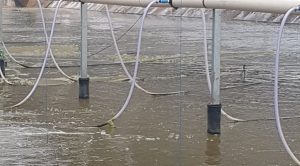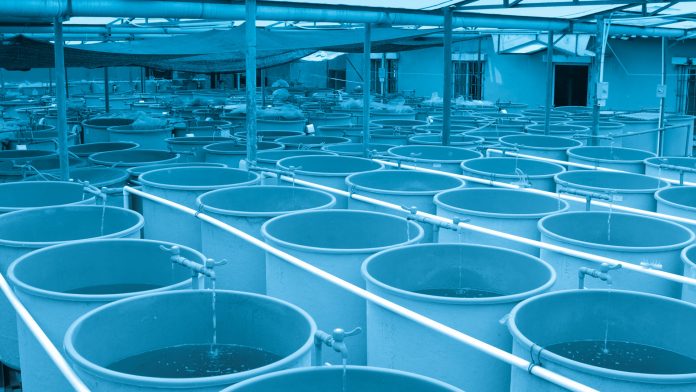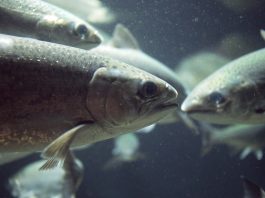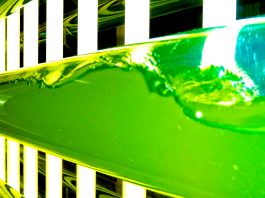Aiming to increase yields and system capacity for aquaculture farmers worldwide, CerMedia LLC has created MarinePure®, a porous, hydrophilic, ceramic biofilter media with vast surface area and efficient flow through properties
One of the many challenges for commercial facilities within the aquaculture industry is maintaining clean water for livestock. Water is pumped into facilities from a variety of sources and as livestock is added, it can become inundated with waste and uneaten food deposits. If there is a surplus of organic matter in the tank, it can be difficult for it to break down or be filtered using current filtration methods. As a result, it can cause a major imbalance in ammonia, nitrite, and BOD levels, impacting the health of livestock and opening the door to a myriad of pests and diseases, making the implementation of a quality biofilter media all the more crucial.
Growing healthy livestock in high-quality water is every aquaculture farmer’s ultimate goal, but many would prefer to accomplish this without complex, expensive equipment.
This is one of the many reasons why so many aquaculture farmers are turning to MarinePure biofilter media, an inert ceramic media to support commercial, in-situ and RAS (Recirculating Aquaculture Systems) water management that has been shown to increase yields; increase feed utilisation and stock density; reduce the need to continually add bacteria; reduce bio-floc and activated sludge build-up – all while being resistant to clogging and retaining its open-flow porosity.
Here is how MarinePure biofilter media improves water purity in the aquaculture industry and why commercial facilities are using it to improve their product quality (and quantity too).
MarinePure biofilter media for better water quality
One of the main culprits of poor water quality in aquaculture applications is excessive feeding and high-stock levels. Most aquaculture farms – even ones that invest in sophisticated feeding systems – will add more food to the tanks or lagoons than can be consumed by the livestock. Some of it dissolves in the water and becomes BOD, which hosts heterotrophic carbonaceous bacteria that grow on the carbon in the leftover food. At the same time, the livestock are excreting waste that accumulates and creates ammonia, which is toxic even in low levels. In order to keep the toxic ammonia levels in check, you need the presence of nitrifying bacteria, which will convert the ammonia and nitrites to less toxic nitrate and then, if the conditions are right, into nitrogen gas, thus keeping the water healthy for the fish. But when the BOD levels are high, the heterotrophic carbonaceous bacteria extract all the oxygen from the water, making it difficult, if not impossible, for the nitrifying bacteria to grow, which would then allow the ammonia levels to increase while the oxygen levels deplete, thereby harming, or possibly killing some livestock.
For instance, in high-intensity aquaculture applications where a higher density of shrimp or tilapia per cubic metre of water are growing, this equates to many more kilograms of livestock, food, and ammonia; therefore, you need a lot more nitrifiers, oxygen, and heterotrophic carbonaceous bacteria to keep the whole system in balance.

MarinePure biofilter media accomplishes this balance by providing a huge surface area (especially when compared to other biofiltration media) for the beneficial bacteria that will digest these pollutants. For example, a single one-and-a-half-inch MarinePure sphere has over 230 square feet (22m2) of surface area. That is the same amount of surface area available in 1,350 plastic bio-balls.
Furthermore, because the biofilter media keeps all the bacteria consolidated at very high concentrations and very low volumes, there is a reduction in the amount of bio-floc, meaning fewer suspended solids and a better transfer of oxygen from gas phase to its dissolved aqueous phase, making the water clearer, while reducing the BOD and increasing dissolved oxygen.
The results? A low-pollution, well-balanced aquaculture system ideal for raising and keeping livestock.
MarinePure for increased yields
Aquaculture farmers are constantly trying to increase their yields; that means higher concentrations of livestock, food and therefore a greater need for beneficial bacteria to balance out the system. As aquaculture farmers who have used MarinePure to help establish robust and healthy facilities can tell you, the media can be used in highly fluctuating situations to stabilise and balance biological loads much faster than less efficient media like plastic bio-balls and other filtration methods.
Not only have these aquaculture farmers used MarinePure to help them expand their facilities and keep higher densities of livestock, but they have also used it to improve the body mass and overall yield.
Let us take, for example, a shrimp farm in Brazil with two new, freshly excavated ponds of the same size, depth, and water source. MarinePure was installed in-situ in one pond application, and both ponds were analysed side by side. Farmers saw a significant increase of efficiency and density in the pond using MarinePure, as well as in the way the shrimp were able to convert their food into biomass, generating a 30% increase in yield within a fourteen-week window compared to the pond without MarinePure.
MarinePure for in-situ or RAS applications
There are two technical applications where MarinePure is ideal for use in aquaculture: in-situ and RAS systems, which will vary based on your facility’s specific needs.
With in-situ aquaculture setups – where the media is bundled in nets or cages and submerged in the pond water – a very passive system can be achieved, with next-to-zero maintenance and low electricity needs except for standard pond aeration. MarinePure, contained in nets or cages, can be left in the water for years. As long as they are near the location where aeration and water movement occur, the media grows stable biofilms naturally and houses all the beneficial bacteria the water needs to stabilise carbon and nitrogen cycles.
RAS systems, on the other hand, require a bit more planning and electricity use (they utilise pumps and blowers to cycle the water through a trickling filter filled with the media). They are also useful in recycling the water that flows through the media into the pond and back into the unit to be cycled through again and can be highly specialised and designed for your facility’s specific needs. RAS systems will also generate much higher yield than in-situ applications and provide a way to assert a greater level of control over the process, which is helpful for aquaculture farmers looking to scale up production.
RAS systems are more common at large, high-intensity farms where the goal is to maximise production through increased density, productivity, and yield. RAS systems usually include bio-trickling filters which, when designed by Cermedia with MarinePure Biofilter Media, may be low energy systems utilising passive aeration; blowers are optional. They are highly effective at reducing BOD and ammonia to levels that are safe for livestock.
MarinePure Biofilters by Cermedia can be highly specialised and designed for your facility’s specific needs. These advanced biofilter systems can help generate much higher yields than in-situ media applications and provide a way to assert a greater level of control over the aquaculture process, which is helpful for farmers looking to scale up their production facilities.
Can Cermedia help you?
Cermedia LLC, located in Buffalo, NY, manufactures MarinePure Biofilter Media. It is a man-made ceramic biofilter media that boasts a huge surface area for biofilm production in addition to a large network of open porosity. These features enable water to move easily throughout the part, allowing the nitrogen components to find the bacteria for conversion, including ammonia and nitrite elimination. In the deeper regions, MarinePure biofilter media will still allow some areas to be low in oxygen, thus promoting the colonisation of denitrifying bacteria that will help complete the nitrogen cycle (or the conversion of nitrates to nitrogen gas).
Please note, this article will also appear in the sixth edition of our quarterly publication.





